#survival foraging
Photo

#edible foods#survival#foraging#bushcraft#camping#camp#campsite#camplife#campout#outdoors#nature#wilderness#discover#adventure#explore
450 notes
·
View notes
Text
it's weird to me that online content on foraging and camp/ bushcraft cooking never seem to overlap, at least not that I've ever found?? foraging recipes are always like 'wild mushroom risotto with chardonnay and arborio rice' and bushcraft cooking is always like 'first, unpack your ribeye you brought from home--' like what is going on here, surely 'guy who wants to camp out and cook over a fire' and 'guy who wants to eat some plants they found in the woods' cannot be completely separate venn diagram circles
#I mean it's clearly not because I Am The Guy#it's just weird that there's no content like this that I've ever seen#you get catch-and-cook for mostly just fishing but sometimes other animals#which is great but a) incomplete b) nearly useless to me as someone who doesn't hunt and is TERRIBLE at fishing#and like. yeah I am not an idiot I know I could blanch and saute greens over a fire without needing my hand held about it#but I would still enjoy it as content? if that makes sense?#one of the myriad ways that dungeon meshi appeals to me personally#is the (apparently EXTREMELY niche) fantasy of 'what if foraged survival cooking was also like. good.'#what can I make with cattails 'well you can take them home and--' what can I make WHERE I FOUND THEM#'you can dry and pound the roots into a starchy survival flour' you are killing me. I'm begging you to consider a midpoint#where I am not in my home kitchen but I'm also not starving to death and have a very small and basic pantry with me#this is one of those things that I'm 'be the change' levels of annoyed about#but I'm not confident in my ability to make good videos lol#about me
16 notes
·
View notes
Text

It's that time of year again where it gets a little warmer and I remember that Amphibia is a show I very much enjoy thinking about. Have some Anne outfits, as a treat <3
If you would like to see what aspect of headcanon/ au worldbuilding had consumed my consciousness like a pestering maggot, feel free to continue below.
Hello! Welcome to I focus on researching one very specific detail until I burn out!
My entire day has been consumed by figuring out how Amphibia's farming works. Like... amphibians are carnivores why do they have farms?
Well, I'll tell you why! The Plantars grow animal feed for predominantly crickets but also others such as silkworms, spiders, snails, etc. They grow produce like cabbage, mushrooms, parsnips, potatoes, dandelions, and turnips as well as heartfruit, a fruit not found on Earth.
In the past, the original amphibian hunter/gatherer societies found that mealworms were attracted to fallen heartfruit, among others. They began to use this knowledge to make traps and eventually began both containing the worms as well as growing the fruit.
Despite mealworms historical prominence in the farming and feeding of Amphibia, crickets are more popular nowadays due to their higher levels of protein. They also began growing a larger variety of produce to further increase efficiency.
Heartfruit is a kind of tree grown fruit with the color of a raspberry, size of a kumquat, and shape of a peach (hence the name). The Plantar's orchard is the only producer of this fruit as its traditionally significant but not necessary for frog kind. They are Anne's personal favorite of the Plantar's produce, being chalk full of nutrients and somehow feels nostalgic to her.
Speaking of Anne, she survives mostly on the Plantar's produce along with cricket meat (knowing that she can at least eat crickets).
After discovering that the amphibians hibernate, she begins to plant pole beans, blueberries, elderberries, and other produce and herbs in her greenhouse to cultivate while she forages and stockpiles for winter. She preps and stores wild rice, pecans, and sunflower seeds (discovered through trial and error). She keeps spare root veggies and other product in the basement. The Plantars help her do this, once they understand the situation, drying heartfruit and salting and smoking fish as well as making jerky out of bugs that they know she can have.
Anne's gonna learn to survive, even if the first winter is especially hard.
#Not my usual content but I love her and this au so much <3#amphibia#4 Stars Au#I've done the research for what Anne would grow and eat no less than four times and it comes out vastly different each time.#Researching what grows in swamps + what frogs eat + what bugs humans can have + what the plantars grow + ...#farmer anne#trans anne boonchy my beloved#I could not find a suitable place for this but a different farm grows spirulina (a freshwater algae) for tadpoles. Anne will also eat this.#They are sold in jars (like baby food)#This whole au is about emphasizing the differences between humans and amphibians#Anne is warmblooded? Must prepare for winter#Can't live on an amphibian's diet? Eat animal feed and forage#Sasha is more resistant to the harsh climate of the mountains as well as to dangerous substances like citris and salt#She eats orange slices as a power play is all I'm saying#Marcy ends up being the first to truly research Amphibia's oceans because she can acturally survive touching the sea#Desi (4th star) is called the 'Sunchild' for a reason#Can't breathe underwater? Learn magic#anne boonchuy#plantar family
15 notes
·
View notes
Text

#mushroom#mushrooms#foraging#foraged food#ai#ai generated#ai issues#spreading awareness#foragecore#food#artificial intelligence#fungi#wild fungi#fungus#ai is dangerous#wild foods#important#important info#serious#survival#amazon#healthy food#foodlover#tumblr recommendations#article#fun guy#political#political posting#politics#please be careful
14 notes
·
View notes
Text
EdenAU idea where Loid/Twilight - one of WISE's youngest agents - is assigned to go undercover as a student in Ostania's Eden Academy to look into a few of the students most likely to go into politics. It's all going fine until one day when his gym class has a "wilderness survival" excursion way out on the grounds and he runs into this weird girl he's never seen before. She's about his age - maybe a little younger - but is decidedly not a student (evidenced from her lack of uniform, messy hair, and all the scrapes and bruises). Despite her wild appearance she was really nice and they ended up foraging for mushrooms together. But when he went back to his group no one believed him when he mentioned a strange girl he found in the woods.
He then keeps running into her. Turns out her name is Yor, and that she lives in the city with her brother. They moved there after their parents died and it's sometimes still hard to buy all the food they need so she often goes foraging on Eden's grounds (since it's the largest natural greenspace still within the city proper). He does try to convince Franky that she's real but there's always some kind of wacky circumstance that keeps her from being revealed to the other students. Loid is even starting to wonder if he actually saw her or if all the stress has finally gotten to him.
#I’m thinking Yor is still a garden assassin in this but is in training#and therefore not getting paid top dollar yet#also old habits die hard after starting out in her rural home where foraging was easier#and maybe she’s eventually caught but Henderson is impressed by her elegant survival skills#(or he learns about what she’s doing and decides to help her out)#maybe Yuri eventually gets in this way and now Loid has another problem#spy x family#fic ideas#au ideas#eden au#loid forger#yor briar
15 notes
·
View notes
Text
Desert Lilly a.k.a Indian Radish


Been a while since I've seen one.
#art of bushcraft#outdoorlife#outdoors#bushcraft#my art#art#ways of old#knowledge is the best survival gear#ways of survival#wild food#wildflowers#wild edibles#foraging
11 notes
·
View notes
Photo




real life is just like video games after all… went on a long hike down a canyon and drank a mana potion i fished out of a pond
#when nature provides you dont say no#food poisoning is for chumps#me who spent all weekend listening to survival novels: look at me Foraging and Living Off the Land#ramblings#powerade#wanderings
24 notes
·
View notes
Text
[PDF] FREE | The Lost Art of Reading Nature’s Signs: Use Outdoor Clues to Find Your Way, Predict the Weather, Locate Water, Track Animals―and Other Forgotten Skills (Natural Navigation)
9 notes
·
View notes
Text
On garden and winter food
I've decided to go and take inventory of all of my canned good, to figure out what kind of stash do I have for this winter, and to know how quickly am I allowed to go thru it. Half an hour of counting and sorting in my basement informed me I had 37 jars of salty-sour types of preserves, and 32 jars of sweet preserves. This is more sweet stuff than I've had in the past, but not nearly enough of salty-sour. 'What was I thinking?' I said to myself, and then I remembered, no, it's not for a lack of planning, I was sick the whole summer, I've done all canning I possibly could. The lesson was just not to get covid in the summer.
Still, I was worried it wouldn't be enough to get me thru the winter, and, since I've been so sick and neglecting my garden, it wasn't going to start producing a lot of new food anytime soon. Not going to the garden for so long really affected its production.
I later remembered, that I forgot to count all of the non-canned stash. I've put extra effort in dried food this year, I have over 10 jars of dried goods (tomatoes, zuchinni, mushrooms, roots, fruit), and there are many meals that can be made out of that. I also have plenty of potatoes, my two big bags of walnuts, many squashes, lots of garlic, and, the ability to still forage for apples and wild edibles.
Usually at this time I would be getting lots of carrots and broccoli from the garden, and some kale, but since it wasn't all planted in time, I have none of that. What I do have is black radish (or turnip, I'm not sure if it's black radish or black turnip. It's white on the inside, and big), celery, parsley, chives, cabbage savoy (not very big), swiss chard, green onions. Which is not a whole lot, but it's a valuable source of fresh produce. I also could possibly locate the jerusalem artichoke planted somewhere in the field, I love eating them during the winter.
I've had to face my own food issues, and that is that I'm incredibly stubborn not to buy anything that I can make myself, and also lazy to make it myself after I don't buy it. For instance, I could make a meal from pasta and a sauce made with sun-dried tomatoes, but I refuse to buy pasta, and I'm never starting the food making process until I'm hungry. So I end up never making it. The entire ordeal can be avoided if I reserved one day, to make a big batch of homemade pasta, have it dry, and then I could make tons of meals from dried good and pasta! Like pasta with mushroom sauce, pasta with zuchinni sauce, cabbage and pasta, pasta salad, those are things I would definitely eat!
In this spirit, I did gather my enegry and made a big thing of pasta, occupying the entire kitchen while it was drying for the whole day. Then I stuffed it all into a large jar, and now I have a big decorative jar with pasta sticking out, and it looks so pretty, now I just never want to eat it. Nobody has yet figured out that it's pasta in the jar, everyone thinks it's some decorative plants in there. It's understandable, since I'm known to put plants in jars for decoration.
I also have some new exciting preserves that I made for the first time this year! My first innovation was related to the pears; we have a pear tree close to the building, but it produces extremely tough and difficult to eat types of pears, everyone just ignores it. Except me, I scurry around it and scramble to collect all of the pears and then I cook them into a compot, feeling like an evil mastermind for figuring out how to eat them. Eventually, I got tired of the compot, and then I figured I could try making a pear-sauce, like an applesauce, but with pears. I wasn't sure if it was gonna go well, because they were so tough and not very sweet, but the result was absolutely fantastic; it's smooth and delicious and sweet. I love this more than I love applesauce. Pleased with my pear-related success.
I also made a spicy jam, made out of blackberries, grapes and plums, and then I added a few hot peppers in. I did this because every single winter I am longing for sweet-spicy mix, and I felt that I would want to eat it. And I was right, when my sinuses started to act up, I was grateful to have a spicy preserve that could make them clear up. I actually think it could be spicier next year.
I'll find out this winter, if I prefer eating the preserves or using the dry goods for recipes, drying is definitely easier and takes less effort, but it should be eaten before February, when the bugs eggs will start to activate inside, making it way less appealing. So that's where the canned goods come into play, they are completely protected from being eaten or spoiled. Hopefully next summer, I'll be healthy and better at getting more canning done.
#winter stash#food stash#canning#drying#food preservation#winter garden#eating homemade thru winter#survival#cooking from scratch#i'm constantly sick now i haven't been able to get my garden food for a week#i had to forage for chickweed from my way home from work#its frustrating#i wish my garden was where i lived :(#if i had my garden next to my house i could just run out and be there in a minute#having to bike there limits all access when i'm sick#and its so cold i can't even think of sitting on a bike when sick#i would die#:(((
50 notes
·
View notes
Text
thinking ab tate resource guarding. Thinking ab him hoarding food and shit. Thinking ab all his hiding spots for snacks and stuff
#he spent his youth having to do So Much just to survive whether that was stealing or foraging#and the fear and desperation from it never disappeared it only grew stronger as time went on#bc he was so so scared about getting used to having a little money and love and food and enjoying it only for it to be ripped away#tatum: headcanons.
2 notes
·
View notes
Text
okay the dual fixation really hitting now. i think we should send fabby to dont starve she would not survive
#bee's buzzing#fabby in the constant. she immediately starts seeing shadow beasts and has to forage in the woods. it'd kill her.#either she would die immediately or she would fully embrace it and become feral. i can feel it.#like give her a few months. maybe less even. and she's gonna be killing things with her bare hands.#but before that up until some sudden breaking point the idea of this is horrific to her and she's absolutely miserable#wait how does she even get there how does she get tricked into the constant. she's smart she knows what manipulation looks like#she wouldn't trust anything. possibly it'd work if she's just been abandoned by zoraxis. discarded. without purpose or direction#ohhhh its developing now i see it in my mind. i see it.#small bonus note i think phoenix would be fine. phoenix could survive the constant theyre built different#zor would steal the throne and go mad with power. i think.#okay thats all stay tuned for POSSIBLY more of my silly little fabby-centric au where i send her to hell
6 notes
·
View notes
Text
4 notes
·
View notes
Text
Tripitaka constantly asking for food, especially in the earlier chapters, reminds me that he was possibly about 18-20 at the beginning of the journey.
A little beyond the true bottomless pit stage, sure, but maybe not quite outside it yet.
#jttw personal#food tw#this on top of being a relatively sheltered temple monk suddenly on an international cross-country trip#on horseback!#that his body was in no way prepared for. absolutely SHOCKED at his new calorie requirements.#someone teach tripitaka to forage so he can graze en route#I don't care if manual labor makes him squeamish#shove some self-sufficiency down his throat for his own good#he's not eating enough#all that constant traveling and he's consuming like. a single bowl of rice one day. a couple peaches the next.#swk who's subsisted on inedible metals for 500 years and doesn't actually NEED to eat or drink to survive: that's probably enough right?#just think of monkey king trying to keep a whole teenager fed though like damn rip buddy#(disclaimer: obviously tripitaka is FINE and - like the toilet - we are probably not meant to think about how bodily needs are being met-)#(-unless it's plot relevant. Counterpoint: I find this funny.)#(Give Sun Wukong A Raise Agenda)#(Tripitaka Learn To Feed Yourself Agenda)#(Your Diet Is ATROCIOUS (in true university-aged young adult fashion. to be fair.) But That Doesn't Mean It SHOULD Be)#(No Making Your Disciples Do All The Work For You Doesn't Count)#(Get Back Here And Be A Good Example To Your Students Young Man)
4 notes
·
View notes
Text

TURN MY BOY INTO DEEP SEA TERROR BEYOND COMPREHENSION
IT HURTS HIM A LOT SO PLEASE MAKE THE KILLING QUICK (BEFORE THE SHARKS TAKE A BITE OF YA)
MAKE THEIR CROWN OF CORAL THE FINAL PIECE OF MEMORIES
#original character#dnd ocs#dnd#forage (oc)#Vast Scylla Forage#artists on tumblr#he survived but not unscathed#pls rb i worked SO hard to get shork heads right!!!!
8 notes
·
View notes
Note
Nature is healing😌
we can go pick some chicken of the woods and chanterelle :)
#could i survive if society collapsed? yeah probably#would i WANT to though?#absolutely not lmao in a zombie apocalypse im opting out#like sure i know how to forage and shoot a gun and grow crops#but do i want to live in a world without working gps and wifi? Not Really!#asks#ask crow
6 notes
·
View notes
Text
Edible (and Non-edible) Plants & Flowers Throughout the United States [Part 1]
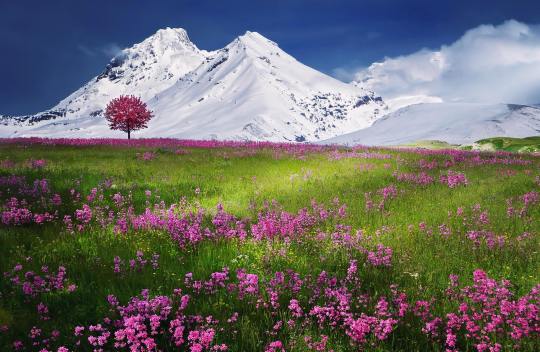
The following plants, flowers and mushrooms can be found throughout the United States, so identifying and harvesting, as well as being able to identify their edible parts, is undoubtedly priceless information in the event of a SHTF situation. You should discuss the safety of ingesting these plants and flowers if you are pregnant and/or breastfeeding.
Go to Part 2.
Acorns (Quercus)
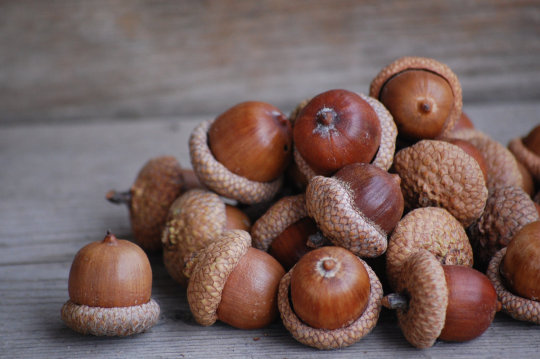
How to identify it: There are two basic types of acorn -- red acorns and white acorns; their color depends on the type of oak they come from. Acorns can generally be identified by their cups, shape, color, and size. Overall, acorns are ball-shaped or oval or some have ridges on them; and the woody cup of acorns can be hairy, scaly or smooth. Mature acorns are brown, black or red.
Where to find it: Acorns are the nuts of oak trees, and so naturally the best place to find acorns is in the drip-line of oak trees.
Edibility & flavor: Acorns taste bitter if they're not leached; however, when roasted, they have a sweetish, nutty flavor. Acorns must be boiled or soaked in water to remove the tannin, which will turn the water a brownish color. This water should be thrown out and replaced and the process repeated until the water no longer turns brown.
Benefits: Effectively controls blood sugar levels; rich in complex carbs, minerals & vitamins; lower fat content than other nuts; good source of fiber.
Caution: Acorns contain tannins, which can be toxic in large amounts and can prevent you from absorbing nutrients. Too much tannin has been linked to cancer and liver disease.
Burdock (Arctium lappa)
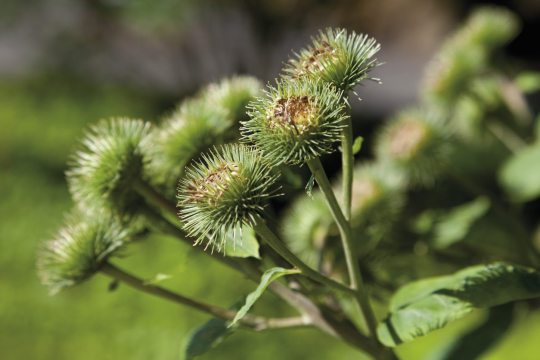
How to identify it: Has large, wavy-edged leaves that are light-colored, woolly on the underside and darker and smoother on the top side. Stalks can grow 4 to 5 feet; flowers are pink and purple with hooked bracts that can adhere to fur and clothes.
Where to find it: Found in pastures, fencelines, and disturbed areas with little competition from surrounding foliage.
Edibility & flavor: Peel the outer layer before eating; can be eaten raw or cooked. Raw burdock is earthy and kind of bittersweet like an artichoke.
Benefits: Contains tons of antioxidants, purifies the blood, may serve as an aphrodisiac, and can treat skin issues (such as acne and eczema).
Caution: Burdock can grow alongside and closely resemble belladonna nightshade, which is toxic. Burdock is also a natural diuretic, so don't ingest it if you're dehydrated.
Catnip (Nepeta cataria)

How to identify it: Catnip is a member of the mint family and, aside from a characteristic minty scent, can also be identified by its square stems and its green to gray-green foliage covered in fine hairs.
Where to find it: Catnip thrives in poor soil conditions, so look for it along railroad tracks, open meadows and fields, along fences and near old houses, near streams and in other areas you'd also expect to find weeds.
Edibility & flavor: Catnip can be eaten raw but has a strong mint flavor; the ideal way of ingesting it is as a tea.
Benefits: Contains antioxidants and other medicinal compounds such as nepetalactone (sedative), thymol (anti-inflammatory), and pinene (antioxidants, antimicrobial, neuroprotective). Catnip also contains calming qualities that promote relaxation.
Caution: Can cause headaches and vomiting in high doses.
Chanterelle Mushrooms (Cantharellus cibarius)

How to identify it: Vary in color from almost white to deep yellow to almost orange. Their caps begin flat-shaped, then become funnel-shaped. The edges curl with age and become wavy or lobed. The stems are solid and smooth and paler at the base.
Where to find it: The best places to find Chanterelles are in mixed hardwood forests, especially around oaks, maples, beeches, poplars and birches. In Southern regions, they can be found beneath blueberry bushes.
Edibility & flavor: Chanterelles can be eaten raw, but caution is advised. If possible, eating them cooked is preferable. They have a slightly fruity taste, sometimes with a hint of apricot or peach flavor, minus the sweetness.
Benefits: Rich in Vitamin D, boosts immunity, and strengthens bones.
Caution: Somewhat similar to jack-o-lantern mushrooms, which are toxic and can cause intense cramps and digestive issues.
Common Mullein (Verbascum thapsus)
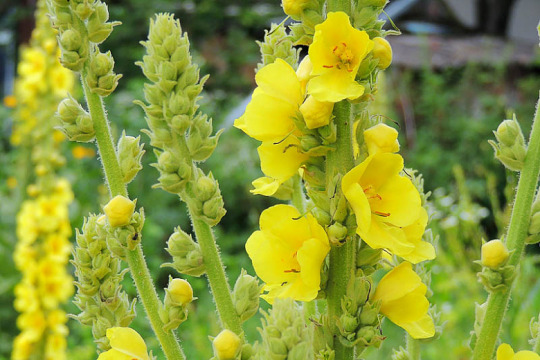
How to identify it: Mullein's defining features emerge in its second year, when it develops a tall, erect stem, growing up to 2 to 7 feet tall. It has soft leaves and yellow flowers.
Where to find it: Common mullein is found in neglected meadows and pasture lands, especially along fence roads, railroad tracks, in vacant lots, wood edges, forest openings, and industrial areas.
Edibility & flavor:
Benefits: Includes beneficial compounds such as saponins, flavonoids, phenylethanoid, iridoids, which are antioxidants, antibacterials, antivirals, and anti-inflammatories.
Caution: Skin contact with mullein can cause skin conditions, such as contact dermatitis.
Common Sheep Sorrel (Rumex acetosella)

How to identify it: Grows as a rosette of arrow-shaped leaves joined by a creeping root system. Every spring, its rosettes blossom into reddish upright flowers.
Where to find it: Located in open, disturbed areas, such as pastures, meadows, roadsides, and rights-of-way. Prefers gravelly and/or sandy soils and doesn't tolerate shade.
Edibility & flavor: The leaves and roots are edible raw or cooked. It has a slightly sour, tangy flavor due to its levels of oxalic acid.
Benefits: Historically used to treat inflammation, scurvy, diarrhea and, according to some limited research, heart issues and cancer. Contains antioxidants and nutrients like Vitamin C, fiber and magnesium.
Caution: Can cause kidney stones in large amounts, as well as damage to the kidneys, liver, and digestive organs.
Common Yarrow (Achillea millefolium)
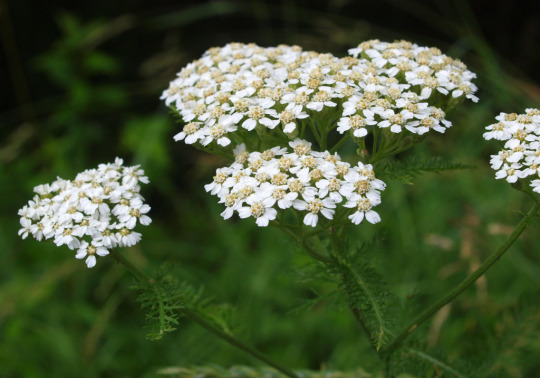
How to identify it: Wild Yarrow typically has white or, rarely, pink flowers; cultivated, it can have yellow, orange, pink or red flowers. The stems are grooved and have small, woolly hairs. Smells distinctly of pine needles.
Where to find it: Prefers sunny locations on thin, sandy soils, such as along roadsides or in fields, waste areas, canyon bottoms, subalpine zones, and even on lawns.
Edibility & flavor: Can be eaten raw or cooked, and has a somewhat bitter flavor.
Benefits: Treats digestive issues, such as ulcers and IBS, bloating, diarrhea, stomach pain, and constipation. Contains compounds that aid in digestion.
Caution: Can slow blood clotting, so avoid ingesting if you're bleeding or have a bleeding disorder. Yarrow can also cause an allergic reaction in people allergic to ragweed and other plants in the Asteraceae / Compositae family.
Dandelions (Taraxacum)

How to identify it: Both flowers in the above photo are dandelions. The white puffball upon which many people blow to scatter its seeds into the wind is what the yellow flowers mature into. These yellow flowers grow on single, unbranching, hollow stems and the leaves are lobed and produce a milky sap.
Where to find it: Dandelions can generally be found anywhere -- in lawns, gardens, parks, meadows, pastures, and disturbed areas. They prefer shade but they still thrive in hotter locations with direct sunlight.
Edibility & flavor: Both flower and stem are edible and can be eaten raw or cooked. The best time to harvest the leaves is when they're still young and tender, before they begin to flower.
Benefits: There are many health benefits of eating dandelions -- they're highly nutritious, contain potent antioxidants, are anti-inflammatories, aid in managing blood sugar, may reduce cholesterol and triglyceride levels, may lower blood pressure, may promote liver health, may aid in weight loss, may support healthy digestion and treat constipation, may boost immunity, may treat skin conditions, support health bones, and may have some cancer-fighting effects.
Caution: Dandelions can increase stomach acid and heartburn in some people, as well as cause skin irritation. People with kidney problems, gallbladder problems, and gallstones should check with their doctors before ingesting dandelions.
Field Chickweed (Stellaria media)
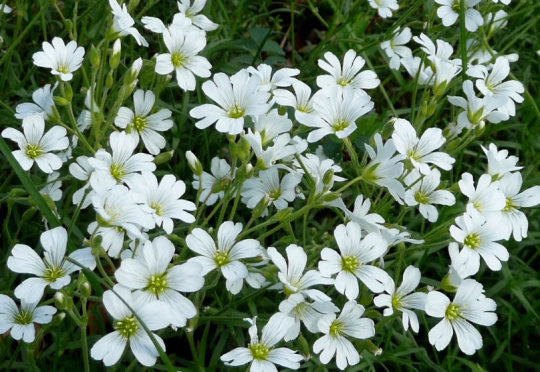
How to identify it: Chickweed is tender, stringy, and rarely grows more than a few inches off the ground. The leaves are small, grow opposite each other along the stem, and are small and teardrop- or egg-shaped with pointed tips.
Where to find it: Generally found in open, grassy areas and lawns.
Edibility & flavor: Chickweed can be eaten raw or cooked. It has a fresh, grassy flavor many compare to corn silk.
Benefits: Reduces inflammation, fights germs, promotes weight maintenance, and boosts immunity.
Caution: Though the potential for poisoning is low, large amounts of chickweed can cause diarrhea and vomiting.
#shtf plan#edible plants#edible flowers#f&d#food and drink#outdrs#foraging#gardening#prep#prepper#prepping#survival#survivalism#survivalist#off the grid#offgrid#acorns#burdock#catnip#chanterelle mushrooms#mullein#sheep sorrel#yarrow#dandelions#chickweed#part 1
98 notes
·
View notes